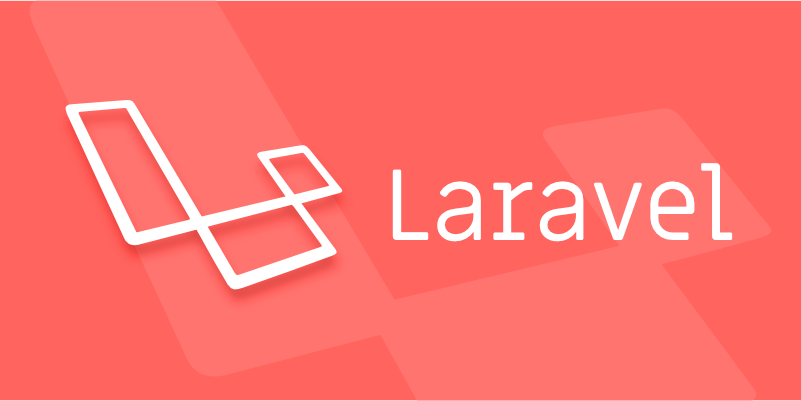Conditionally adding relationships using `whenLoaded()` in Laravel.
Jul 19, 2025 am 01:32 AMwhenLoaded() is a method in Laravel for conditional processing of loaded relationships. It executes a callback function when the specified relationship has been loaded, avoiding triggering N 1 queries or errors when not loaded. For example, in API resources, only fields are added when the relationship exists, associated data is processed without forced loading, and secure access to the attributes in combination with optional(). When using it, make sure that the relationship name is accurate and preloaded through with() or dynamic access. The closure receives the relationship results (model or collection) for optimization performance and data transformation.

In Laravel, when you're working with Eloquent relationships and need to conditionally load or add a relationship to a model based on whether it was loaded from the database, whenLoaded() is a useful method. It helps avoid unnecessary data fetching and keeps your code clean by checking if a relationship has already been loaded.

Here's how and why you'd use it.
What does whenLoaded() actually do?
The whenLoaded() method checks if a specific relationship was loaded on a model. If it was, it lets you run a callback that modifies or augments that relationship.

For example:
$user->whenLoaded('profile', function ($profile) {
// This only runs if the profile relationship was loaded
return $profile->is_complete ? 'Complete' : 'Incomplete';
}); This avoids trying to access $user->profile when it might not be available (like in cases where it wasn't eager-loaded), which could lead to N 1 query issues or errors.

When should you use whenLoaded() ?
You'll typically reach for whenLoaded() in scenarios like:
- Transforming API responses — only include extra fields if related models are present.
- Avoiding N 1 queries — only process relationships that were already eager-loaded.
- Conditional logic in resource collections or transformers — adjust output based on what data is available.
Let's say you have a user resource that sometimes include their posts. You want to count comments only if posts are loaded:
$user->whenLoaded('posts', function ($posts) {
return $posts->flatMap->comments->count();
});That way, you're not forcing a load of posts just to count comments.
How to use whenLoaded() in real code
Here's a more practical example inside a Laravel resource collection:
public function toArray($request)
{
Return [
'id' => $this->id,
'name' => $this->name,
'email' => $this->email,
'latest_post_title' => $this->whenLoaded('posts', function ($posts) {
return optional($posts->first())->title;
}),
];
}A few notes here:
- We're using
optional()to safely access the first post's title without throwing an error if there are no posts. - The
latest_post_titlekey will only appear if thepostsrelationship was loaded.
If you don't use whenLoaded() , you might end up with either missing data or unexpected queries being triggered behind the scenes.
A few gotchas and tips
- Make sure the relationship name passed to
whenLoaded()matches exactly — it's case-sensitive and must match the method name on the model. -
whenLoaded()doesn't load the relationship for you — it only acts if it was already loaded viawith()or dynamically accessed earlier. - It works great in combination with Laravel's conditional attributes (
when()andmergeWhen()).
Some common mistakes:
- Trying to use
whenLoaded()expecting it to lazy-load the relationship — it won't. - Forgetting that the closure receives the relationship result directly (ie, a Collection or Model, depending on the type of relationship).
So if you're working with a hasOne or belongsTo , you'll get a single model or null . With hasMany , you'll get a collection.
Using whenLoaded() properly can make your code cleaner and more efficient, especially when building APIs or complex data transformations. It's one of those small tools in Laravel that feels simple but makes a big difference in avoiding performance pitfalls.
Basically that's it.
The above is the detailed content of Conditionally adding relationships using `whenLoaded()` in Laravel.. For more information, please follow other related articles on the PHP Chinese website!

Hot AI Tools

Undress AI Tool
Undress images for free

Undresser.AI Undress
AI-powered app for creating realistic nude photos

AI Clothes Remover
Online AI tool for removing clothes from photos.

Clothoff.io
AI clothes remover

Video Face Swap
Swap faces in any video effortlessly with our completely free AI face swap tool!

Hot Article

Hot Tools

Notepad++7.3.1
Easy-to-use and free code editor

SublimeText3 Chinese version
Chinese version, very easy to use

Zend Studio 13.0.1
Powerful PHP integrated development environment

Dreamweaver CS6
Visual web development tools

SublimeText3 Mac version
God-level code editing software (SublimeText3)

Hot Topics
 How to use PHP to develop a Q&A community platform Detailed explanation of PHP interactive community monetization model
Jul 23, 2025 pm 07:21 PM
How to use PHP to develop a Q&A community platform Detailed explanation of PHP interactive community monetization model
Jul 23, 2025 pm 07:21 PM
1. The first choice for the Laravel MySQL Vue/React combination in the PHP development question and answer community is the first choice for Laravel MySQL Vue/React combination, due to its maturity in the ecosystem and high development efficiency; 2. High performance requires dependence on cache (Redis), database optimization, CDN and asynchronous queues; 3. Security must be done with input filtering, CSRF protection, HTTPS, password encryption and permission control; 4. Money optional advertising, member subscription, rewards, commissions, knowledge payment and other models, the core is to match community tone and user needs.
 Guide to matching Laravel routing parameter passing and controller method
Jul 23, 2025 pm 07:24 PM
Guide to matching Laravel routing parameter passing and controller method
Jul 23, 2025 pm 07:24 PM
This article aims to resolve common errors in the Laravel framework where routing parameter passing matches controller methods. We will explain in detail why writing parameters directly to the controller method name in the routing definition will result in an error of "the method does not exist", and provide the correct routing definition syntax to ensure that the controller can correctly receive and process routing parameters. In addition, the article will explore best practices for using HTTPDELETE methods in deletion operations.
 Data_get practice for dynamic access to model association properties in Laravel Livewire
Jul 23, 2025 pm 06:51 PM
Data_get practice for dynamic access to model association properties in Laravel Livewire
Jul 23, 2025 pm 06:51 PM
This article aims to solve how to efficiently and securely access deep properties associated with model through string paths when dynamically rendering data in LaravelLivewire components. When you need to obtain specific fields of the associated model based on a configuration string (such as "user.name"), access using object properties will fail. The article will introduce Laravel's data_get helper function in detail and provide code examples to show how to use it to solve this problem gracefully and ensure the flexibility and robustness of data acquisition.
 How to develop AI intelligent form system with PHP PHP intelligent form design and analysis
Jul 25, 2025 pm 05:54 PM
How to develop AI intelligent form system with PHP PHP intelligent form design and analysis
Jul 25, 2025 pm 05:54 PM
When choosing a suitable PHP framework, you need to consider comprehensively according to project needs: Laravel is suitable for rapid development and provides EloquentORM and Blade template engines, which are convenient for database operation and dynamic form rendering; Symfony is more flexible and suitable for complex systems; CodeIgniter is lightweight and suitable for simple applications with high performance requirements. 2. To ensure the accuracy of AI models, we need to start with high-quality data training, reasonable selection of evaluation indicators (such as accuracy, recall, F1 value), regular performance evaluation and model tuning, and ensure code quality through unit testing and integration testing, while continuously monitoring the input data to prevent data drift. 3. Many measures are required to protect user privacy: encrypt and store sensitive data (such as AES
 How to set environment variables in PHP environment Description of adding PHP running environment variables
Jul 25, 2025 pm 08:33 PM
How to set environment variables in PHP environment Description of adding PHP running environment variables
Jul 25, 2025 pm 08:33 PM
There are three main ways to set environment variables in PHP: 1. Global configuration through php.ini; 2. Passed through a web server (such as SetEnv of Apache or fastcgi_param of Nginx); 3. Use putenv() function in PHP scripts. Among them, php.ini is suitable for global and infrequently changing configurations, web server configuration is suitable for scenarios that need to be isolated, and putenv() is suitable for temporary variables. Persistence policies include configuration files (such as php.ini or web server configuration), .env files are loaded with dotenv library, and dynamic injection of variables in CI/CD processes. Security management sensitive information should be avoided hard-coded, and it is recommended to use.en
 How to make PHP container support automatic construction? Continuously integrated CI configuration method of PHP environment
Jul 25, 2025 pm 08:54 PM
How to make PHP container support automatic construction? Continuously integrated CI configuration method of PHP environment
Jul 25, 2025 pm 08:54 PM
To enable PHP containers to support automatic construction, the core lies in configuring the continuous integration (CI) process. 1. Use Dockerfile to define the PHP environment, including basic image, extension installation, dependency management and permission settings; 2. Configure CI/CD tools such as GitLabCI, and define the build, test and deployment stages through the .gitlab-ci.yml file to achieve automatic construction, testing and deployment; 3. Integrate test frameworks such as PHPUnit to ensure that tests are automatically run after code changes; 4. Use automated deployment strategies such as Kubernetes to define deployment configuration through the deployment.yaml file; 5. Optimize Dockerfile and adopt multi-stage construction
 Deep analysis of matching Laravel routing parameter transfer and controller method
Jul 23, 2025 pm 07:15 PM
Deep analysis of matching Laravel routing parameter transfer and controller method
Jul 23, 2025 pm 07:15 PM
This article deeply explores the correct transmission of routing parameters and the matching mechanism of controller methods in the Laravel framework. In response to the common "method does not exist" error caused by writing routing parameters directly to the controller method name, the article elaborates on the correct way to define routing, that is, declare parameters in the URI and receive them as independent parameters in the controller method. At the same time, the article also provides code examples and suggestions on best practices for HTTP methods, aiming to help developers build more robust and RESTful Laravel applications.
 Laravel routing parameter passing: correctly define the controller method and routing binding
Jul 23, 2025 pm 07:06 PM
Laravel routing parameter passing: correctly define the controller method and routing binding
Jul 23, 2025 pm 07:06 PM
This article discusses the correct posture of parameter transfer of controller method in Laravel routing in depth. In response to common errors caused by writing routing parameters directly to the controller method name, the correct routing definition syntax is explained in detail, and the mechanism of Laravel automatic parameter binding is emphasized. At the same time, the article recommends using HTTPDELETE method that is more in line with RESTful specifications to handle deletion operations to improve the maintainability and semantics of the application.






